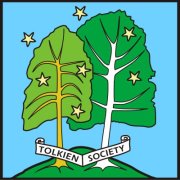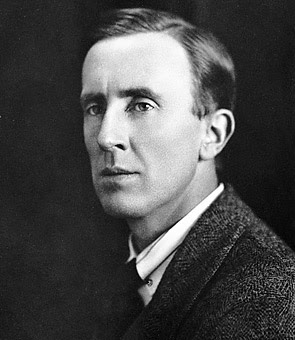 The Tolkien Society is pleased to announce that the Leeds Civic Trust will be siting a blue plaque at 2 Darnley Road, West Park, Leeds. Dr Kersten Hall, graduate of St Anne’s College, Oxford and Visiting Fellow to the Faculty of Arts at the University of Leeds will unveil the plaque on the 1st of October 2012. The Tolkien Society and its members have been instrumental in securing this recognition for a former residence of J. R. R. Tolkien and his time at the University of Leeds in the 1920s.
The Tolkien Society is pleased to announce that the Leeds Civic Trust will be siting a blue plaque at 2 Darnley Road, West Park, Leeds. Dr Kersten Hall, graduate of St Anne’s College, Oxford and Visiting Fellow to the Faculty of Arts at the University of Leeds will unveil the plaque on the 1st of October 2012. The Tolkien Society and its members have been instrumental in securing this recognition for a former residence of J. R. R. Tolkien and his time at the University of Leeds in the 1920s.
Ian Spittlehouse, Trustee and the Tolkien Society’s liaison with the representatives of West Park and the Leeds Civic Trust said, “This is a timely recognition of Tolkien’s tenure in Leeds, and a welcome addition to Yorkshire’s influence on his academic and literary career.”
 J.R.R. Tolkien, graduate of Exeter College, Oxford, was Reader in English language at the University of Leeds. His family moved to Leeds, residing briefly at 5 Holly Bank, Headingley, before leasing a house in St Mark’s Terrace. In 1924, Tolkien bought the semi-detached property in Darnley Road. He went on to be made Professor of the English Language at the university. The family lived there for over a year before Tolkien’s election to the Rawlinson and Bosworth chair of Anglo-Saxon saw them return to Oxford in 1926. During his time at the University of Leeds, Tolkien was instrumental in shaping the English Language syllabus at the university; some aspects of this were still present sixty years later. He also worked with E.V. Gordon to produce an edition of the Middle English poem Sir Gawain and the Green Knight, which was published in 1925.
J.R.R. Tolkien, graduate of Exeter College, Oxford, was Reader in English language at the University of Leeds. His family moved to Leeds, residing briefly at 5 Holly Bank, Headingley, before leasing a house in St Mark’s Terrace. In 1924, Tolkien bought the semi-detached property in Darnley Road. He went on to be made Professor of the English Language at the university. The family lived there for over a year before Tolkien’s election to the Rawlinson and Bosworth chair of Anglo-Saxon saw them return to Oxford in 1926. During his time at the University of Leeds, Tolkien was instrumental in shaping the English Language syllabus at the university; some aspects of this were still present sixty years later. He also worked with E.V. Gordon to produce an edition of the Middle English poem Sir Gawain and the Green Knight, which was published in 1925.
Tolkien’s time in Leeds prefaced his long academic career at Oxford and the publication of The Hobbit and The Lord of the Rings. During his time in Leeds, he was developing the story-teller’s art. He began writing The Father Christmas Letters, for his son, John, in 1920. In 1925, he composed a story for his second son, Michael, to explain the loss of a toy dog on the beach at Filey. This was eventually edited and published in 1998 as Roverandum.


